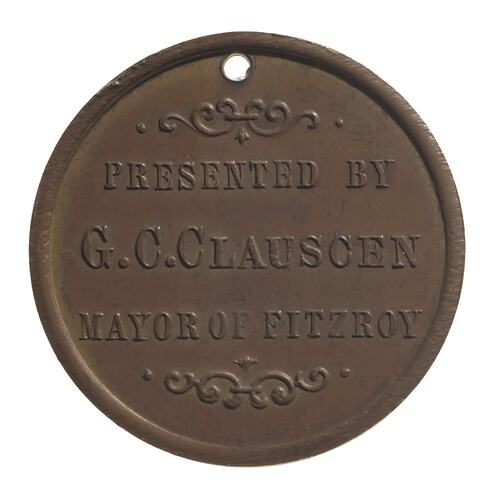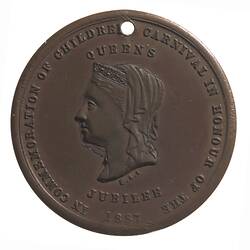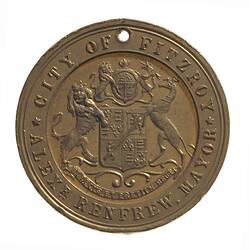Fitzroy was Melbourne's first suburb. It adjoins Carlton on its western boundary and Collingwood on its east. Its name derives from Sir Charles Fitz Roy, Governor of New South Wales, 1846-1855. It existed as a municipality from 1958 to 1994.
In 1839 the area of Fitzroy south of Alexandra Parade was subdivided into lots of about 12 hectares and offered for sale. The area, including Collingwood, was then called Newtown. The layout of streets was mostly in the hands of private sub-dividers: the government surveyor had prescribed only main arteries such as Nicholson, Brunswick, Smith, Gertrude and Johnston Streets. Building types were a mixture of masonry and timber; Fitzroy North was laid out in the mid 1850s as a more gracious suburb. After the gold rushes terraces predominated.
In 1850 the area now known as Fitzroy was made the Fitzroy Ward of the Melbourne City Council. A separate Fitzroy municipality was created on 10 September 1858 by severance of the ward from Melbourne. By then about 10,000 people lived in Fitzroy.
Brunswick Street became the main commercial sector, and Smith Street less so but located on the route to Heidelberg. The route skirted Fitzroy North. Fitzroy (south) was well positioned for working people's housing, close to industries in Collingwood, Carlton, North Melbourne and Melbourne. Local industries included flour mills, footwear factories, a brewery, joinery works and timber yards. The 'Great White City' factory of MacRobertson's confectionery in Smith Street occupied half a hectare by the 1920s.
A separate Fitzroy municipality was created on 10 September 1858. Fitzroy became a Borough in 1865 and was proclaimed a Town in 1870.
During the 1880s Fitzroy (south) became increasingly working class. Mansions became boarding houses, and the single men in them attracted prostitution as a local industry. Illegal activities flourished. Churches increased their charitable activities, focusing on ragged children, facilities for single women and the relief of distress. Much of the philanthropic initiatives, though, came from organizations outside Fitzroy.
In 1886-7 three tramlines were opened through Fitzroy - Nicholson Street, Brunswick Street and Smith Street. The Smith Street route extended beyond Fitzroy's borders by 1890 and had retail catchments in Collingwood and Northcote. It became a regional shopping strip.
The Fitzroy council opened a pioneering free public library in 1877. The following year Fitzroy was proclaimed a city and in 1888 it substantially added to the town hall building to provide for the library and a court house.
In Victoria Parade in 1893 the Irish Sisters of Charity began St. Vincent's Hospital, which within twenty years became the second busiest in metropolitan Melbourne.
Fitzroy was proclaimed a City in 1913. However, it is named as a city on medal, issued in 1897 to commemorate the jubilee of Queen Victoria.
When the Housing Commission built modern estates in outer suburbs in the postwar years some of Fitzroy's population took advantage of the new houses. Their places were largely taken by postwar immigrants. By 1954 about 12% of Fitzroy's population was Italian-born; in 1966 33% were Italian or Greek-born. The Italian-born and the population with an Irish background constituted a strong Catholic body. Within a decade, however, the numbers of southern European immigrants had begun to decline, and in recent years people of Asian ethnicity have come to make up nearly 9% of the population.
The first Housing Commission estate was established in the mid 1950s. In recent years Fitzroy's older housing has been restored and redeveloped as part of the gentrification of the suburb.
In 1993 part of Carlton North was transferred from Melbourne city to Fitzroy, and on 22 June 1994 Fitzroy City was united with Collingwood and Richmond Cities to form Yarra City.
References:
Australian Places website, Monash University, http://arts.monash.edu/ncas/multimedia/gazetteer/list/fitzroy.html, accessed 20/10/2003.
Yarra City web site http://www.yarracity.vic.gov.au/chambers/coy%20fitzroy%20mayors.pdf, accessed 20/10/2003.
More Information
-
Keywords
-
Localities
-
Authors
-
Article types





